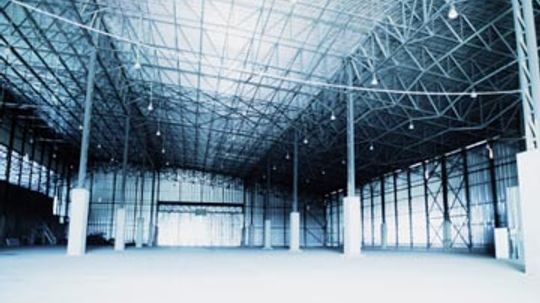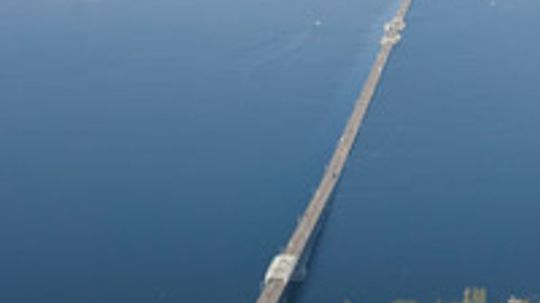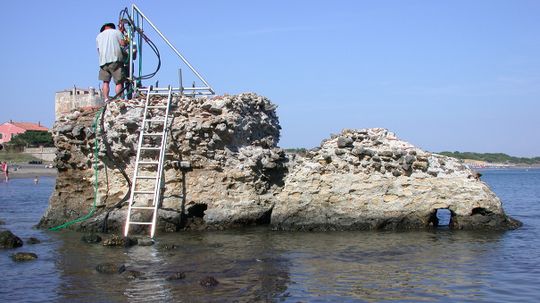Engineering
Engineering is the discipline of design and construction of mechanical devices, equipment, structures and public works systems. Topics include aircraft technologies, buildings, bridges, robotics and heavy machinery.

The World's Most Awe-inspiring Glass Buildings

10 Innovative Architects to Watch

16 World-Famous Architects and Their Impact

The Steepest Road in the World, Plus 9 Rival Inclines

Here's Longest Bridge in the U.S., Plus 7 Runners-Up

10 Types of Swords for All Sorts of Circumstances

A Horrifying Russian Lathe Accident Highlights Vital Safety Protocols

How Zambonis Work

What's the Hardest Wood in the World?

10 Types of Metal (and We Don't Mean the Music)

Are food-based plastics a good idea?

Your Thoughts Could Activate a Tiny Robot Inside Your Own Brain

How Star Wars Works: Fan-built Droids

Robot Pictures

What's the Scariest Roller Coaster in the World? 10 Contenders

The Tallest Roller Coaster in the World Stood for 19 Years

Tallest Building in the U.S. and 13 Other Stunning Skyscrapers
Learn More / Page 6
The Bay Bridge is a wonder of structural engineering. Find out how multiple architectural styles were incorporated into the bridge that unites Oakland with San Francisco.
A soft-story building has a first floor that's more flexible than the ones above -- think apartments over a department store that's mostly open space. How does soft-story retrofitting keep such buildings from collapsing in a quake?
Steel is getting more expensive because the prices of iron and coal are rising. Are there alternatives to steel that can do the same job -- or better -- for less?
Advertisement
If you think regular old domes took the world of structural engineering by storm, you should meet their geodesic cousins. What is a geodesic dome, and who first came up with the idea of building triangle-covered spheres as practical structures?
Bridges span the gap and help us get from point A to B, but who knew they could float, too? Find out what the deal is with floating bridges in this article.
Jenga seems like such a simple game -- all you have to do is keep a tower of wooden blocks from toppling over. It may be simple, but it's anchored by several complex structural engineering concepts.
By Dave Roos
Playing with Lego blocks isn't just child's play. In fact, these blocks and products present a hands-on opportunity to learn the basics of structural engineering.
Advertisement
You may see most bridges as those things you cross on your way to somewhere else, but where would you be if one collapsed? We've figured out 10 reasons why the worst happens.
The World Trade Center employed several new approaches to skyscraper construction. From slurry walls to sky lobbies to "tube within a tube" design features, what made this project distinctive from an architectural engineering standpoint?
The materials used to build the World Trade Center's twin towers have been heavily scrutinized since the 9/11 terrorist attacks -- including the steel that formed the frames of the skyscrapers.
It's been compared Jerusalem's Wailing Wall. What purpose did the slurry wall serve the World Trade Center, and what is its significance now?
Advertisement
Sports injury taping has undergone a quiet revolution over the last 30 years. How can a pattern of tape stuck to your body help you heal from (or prevent) an injury?
Dozens of different types of architectural home styles from Federal to Mediterranean exist in the United States. Learn about the different types of architectural home styles in this article.
Glass ionomer cement is a kind of cement used in restorative dentistry. Learn what glass ionomer cement is in this article.
Wind tunnels are the unsung heroes of aerodynamics. Thanks to these breezy devices, we have safer planes, cars and space vehicles.They even provide some extreme fun for the adrenaline junkies among us. What's the deal with wind tunnels? Find out in this article.
Advertisement
Welding isn't the only way to make metals, like the ones on your aviator shades, meet up. Brazing can do the trick, too, with a little heat, some filler and some capillary action.
We see buildings pop up and get torn down all the time, but some structures (and the architects who designed them) were built to last. These 16 are some of the most famous.
Move over, Gaudi, Gehry and Wright. There are some new architectural players on the scene, and they're shaping our world in unique and innovative ways.
Controversy surrounds the removal of public monuments honoring the U.S. Confederacy. But who or what determines which monuments go up or come down?
By Dave Roos
Advertisement
With the Campaign to Stop Killer Robots heating up, we step back a few decades to look at the first human death by robot.
By Bryan Young
There's more to replacing human riders than just using cool tech, as the advancement helps solve a serious human rights issue.
By Chris Opfer
The android known as FEDOR used pistols to display its decision making and dexterity, officials said, not as a preview of robot warfare.
What do you do when you're out of land but want to expand an airport? Try building on water.
Advertisement
The ancients were able to devise a mix for concrete that actually gets stronger over time thanks to chemical reactions. If only we could rediscover the recipe...
Roundabouts aren't all that complicated, but they're still relatively rare in the U.S., especially when compared with France.
























